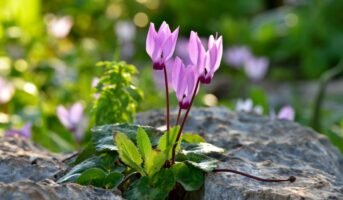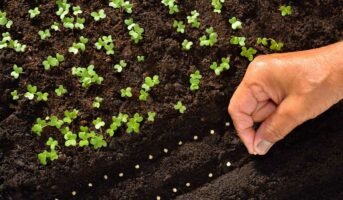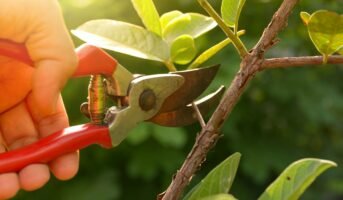The paper mulberry, also known as Broussonetia papyrifera or Morus papyrifera L, is a species of flowering plant that belongs to the Moraceae family.
Planting Paper Mulberry can be a great addition to your vibrant garden. It is a beautiful way to enjoy the rich fragrance and blossoms it produces. Also, it’ll enrich the beauty of your entranceway.
Native Habitat
Paper Mulberry was among the first Asian plants to be brought to Europe; it has been grown here since at least the beginning of the 18th century. It has milky, sticky sap like all other members of the family. Its natural habitat is in Asia, where it can be found in places like India, Japan, Indochina, China, Korea, and Burma. It is widely cultivated worldwide and has spread to portions of Africa, the US, and Europe as an invasive plant.
Moreover, common names for the paper mulberry include pulp mulberry and tapa cloth tree. It might be confused with domestic red mulberry, white poplar trees, basswood, sassafras, and exotic white mulberry. As we get fiber for paper and fabric from this plant, it is significant. The trees are vulnerable to being uprooted by strong winds because of their low root systems.
Paper Mulberry: Factsheet
| Scientific Name | Broussonetia papyrifera |
| Common Name | Paper mulberry, pulp mulberry, tapa cloth tree |
| Family | Moraceae |
| Mature Size | 10-20m tall |
| Climate | sub-humid warm, subtropical monsoon climate |
| Flowering season | August to September |
| Life span | For many decades |
| Native Area | East Asian countries Korea, China, Laos, Japan, Thailand, Cambodia, Burma, and Assam (India), |
The Genus
Plant
Paper Mulberry often grows in warm temperate and subtropical locations, preferring subtropical monsoon and sub-humid warm temperatures. Similar to that, it needs wet, properly drained soil and has failed when grown in poor soil. Light soils and sandy loams are preferred by it. Clay soils that are too rigid and laterite soils that are too hard restrict roots from reaching the subsoil, which stunts growth.
Stout, spreading, grey-brown branches on it are brittle and vulnerable to wind damage. Stipular scars can be seen on the branches. Young shoots and branchlets are pubescent and subtomentosa, respectively. The bark is smooth, light grey, and has little fissures or ridges. The milky latex is present in the stem, branches, and petioles.
Mature height
Paper mulberry varies between medium and large deciduous trees that grow to a height of 10 to 20 meters (although rarely up to 35 m). The top of the plant has a rounded, spreading shape. It is a thorny, quickly-growing tree that can grow up to 21 m and 70 cm in diameter under ideal conditions in a hot, humid climate.
Sun tolerance
Paper mulberry grows extremely well in full sun and moist water. Note that it is not tolerant to drought and can die if not watered regularly.
Cold tolerance
While the paper mulberry can tolerate dry climate for around 4 months, it cannot tolerate bitter cold climate and the plant may die eventually.
Leaves
Variable mulberry-like papery leaves are found on paper mulberries. While other leaves lack lobes, some are deeply lobed. The leaves are dentate-crenate, alternate/subopposite, acuminate, and ovate, with often oblique bases. The upper surface of the leaves is coarse, and the lower side has a woolly texture. 9.7 x 6.6 cm is the size of the leaves. Stipules measure 1.6 to 2.0 cm, while petioles are 3 to 10 cm long.
Leaves colour
The colour of the paper mulberry leaves are brownish green.
Crown shaft
The paper mulberry has a round and spreading crown.
Growth rate
The paper mulberry is a fast growing deciduous tree that within a period of one to one and half years reaches harvest size of 13 feet.
Self pruning characteristic
Pruning is done during winters when the entire stem us reduced to 10-15 cm. This is done to remove all parasites and insects that are ruining the bark of the tree and impacting its growth.
Flower
The male and female trees of the Paper mulberry have separate flowering spikes that are elongated and can grow up to 8 cm (3.2 in) long and 2.5 cm (1 in) long, respectively. A superior ovary with a filiform style and a perianth with two to four-lobed segments are features of female flowers. Four free, inflexed stamens with four valvate tepals make up the male flower’s structure. Over much of the tree’s area in the Pacific, flowering is either unknown or sporadic. Female flowers typically have an orange color, whereas male blooms typically have a yellowish-white appearance.
Fruit
The fleshy, compound, shiny-reddish fruit of the paper mulberry has achenes that are 1-2 cm long and wide and hang on long, fleshy stalks.
How to Eat?
- You can steam or boil young leaves.
- The cooked leaves and fruits can be eaten.
Uses and benefits of Paper Mulberry
Paper mulberry offers numerous benefits if you plant it in the backyard of your home. Let’s see some of the fantastic benefits that make this tree a must-have in your garden!
- The properties of leaves can increase reduced blood cells.
- In rural Pakistan, this species’ bark and fruit, referred to as “jangli toot” locally, are used as laxatives and antipyretics.
- The leaf juice has laxative and diaphoretic properties; dysentery is one condition it is used to treat.
- Additionally used as a poultice for bites and other skin conditions.
- As a galactagogue, the root is cooked with other foods.
- The bark is decocted to treat ascites, lessen oedema or swelling, and treat abdominal distension.
- According to reports, applying latex externally can help treat conditions including neurodermatitis, tinea infection, eczema, bee stings, and insect bites, and it is also used as a vulnerary.
- Additionally, leaves are used for diarrhea, enteritis, and gonorrhea and are astringent in “fluxes” and gonorrhea.
- Chinese medicine describes sap as removing pus.
- China uses stems to treat skin outbreaks.
Paper Mulberry: Additional facts
- In the United States, particularly in the Southeast, paper mulberry trees were often used as ornamental and shade trees.
- In China, the leaves are fed to pigs and silkworms.
- Bark fiber makes rope, fabric, and other fabrics.
- By about 100 AD, China started using it to make paper.
- By 600 AD, Japan started producing washi from it.
- In Korea, paper made from mulberry bushes is known as hanji.
- The plant’s wood can be used to make furniture and household items, while the roots can be utilized to make rope.
- It is also appropriate for manufacturing writing, printing, and newspaper papers.
- When the trees are cut, they exude a latex-heavy fluid that is highly sticky and can destroy garments.
- Twice a year, fruits are produced. Trees produce a natural dye that ranges in hue from green to yellow-green, but the underlying chemical does not appear to have been identified.
Other uses of Paper Mulberry
Food
Both humans and animals can consume the meal made from Paper Mulberry. With a protein content of 16–21% and essential minerals, its young leaves are fit for human food. There is not much edible flesh, but it is said to have a lovely flavor. The fruit is a ball about 1.5 cm in diameter, with numerous small edible fruits protruding.
Fiber
It has been well-known for about 1,500 years as a plant whose bark may be used to produce a paper of varying qualities, from the lowest to the highest. While the South Sea Islands use the inner bark (bast) fibers for a tapa (cloth), Japan, Indonesia, Myanmar, and Thailand use them to make specialty papers, including cosmetic tissue, lens paper, paper napkins, and expensive hand-made paper. Elegant loincloths are made from the male flower spikes of Artocarpus altilis and paper mulberry fiber.
Timber
The wood has a straight, even, light-colored grain and is soft, greyish-white in color. Its fundamental density is 506 kg/m3, making it light. Because it is soft and brittle, B. papyrifera wood is primarily used to make inexpensive furniture, matchsticks, packing cases, boxes, plywood, building materials, sports equipment, and pencils.
Medicine
It’s claimed to have astringent and diuretic properties. The leaf juice has laxative and diaphoretic properties. The leaves are used in Chinese medicine for bleeding wounds, uterine bleeding, blood sputum, and excessive menstrual bleeding.
See Also: Vegetative propagation: All you need to know
Steps to Plant Paper Mulberry in Your Home Garden
If you have the space and environment to grow a beautiful tree around your house, the Paper Mulberry is a great pick. The tree has several unique characteristics that will elevate the beauty of your home. Let’s look at the steps to plant this tree in your garden/backyard!
- Choose the appropriate time to plant Paper Mulberry.
- While planting Paper Mulberry, make sure there’s total exposure to sunlight.
- The ideal temperature for the growth of Paper Mulberry is 75-83 F during day time and 68-75 F at night.
- Check the soil’s permeability, as it generally grows in sandy soil.
- Check the pH balance as Paper Mulberry can grow in soils with a pH of up to 5.04.
- Dig a hole deep enough for the roots to encircle it fully, leaving some loose soil in the area.
- Plant each one at a distance. Plant cautiously to prevent root damage.
- Add enough soil to the hole to cover the stem’s base.
- After planting, give a decent amount of water.
- After that, water your plant often, but only enough to keep it moist, not drenched.
- Before fertilizing the plants, wait a week or two.
- Trim the plant frequently to boost its growth.
- In India, the old leaves fall off between September and January, while the fresh ones start to grow in either February or March. For a month to three months on average, trees are leafless.
- March to April is when the flowers bloom. From July to September, when it rains, the fruit ripens.
FAQs
What does Paper Mulberry taste like?
It is edible and tastes like a sweet, almost mild honey-like flavor.
Are paper mulberry leaves toxic to animals?
No, it is not toxic. However, if consumed in large quantities, then diarrhea may happen.
What is a paper mulberry used for?
Paper Mulberry is mainly used for paper making.
How fast does paper mulberry grow?
It takes 12-18 months to grow.
How does paper mulberry propagate?
It can be propagated by stem cutting, seeds, layering, etc.
Got any questions or point of view on our article? We would love to hear from you. Write to our Editor-in-Chief Jhumur Ghosh at [email protected]
Housing News Desk is the news desk of leading online real estate portal, Housing.com. Housing News Desk focuses on a variety of topics such as real estate laws, taxes, current news, property trends, home loans, rentals, décor, green homes, home improvement, etc. The main objective of the news desk, is to cover the real estate sector from the perspective of providing information that is useful to the end-user.
Facebook: https://www.facebook.com/housing.com/
Twitter: https://twitter.com/Housing
Email: [email protected]











